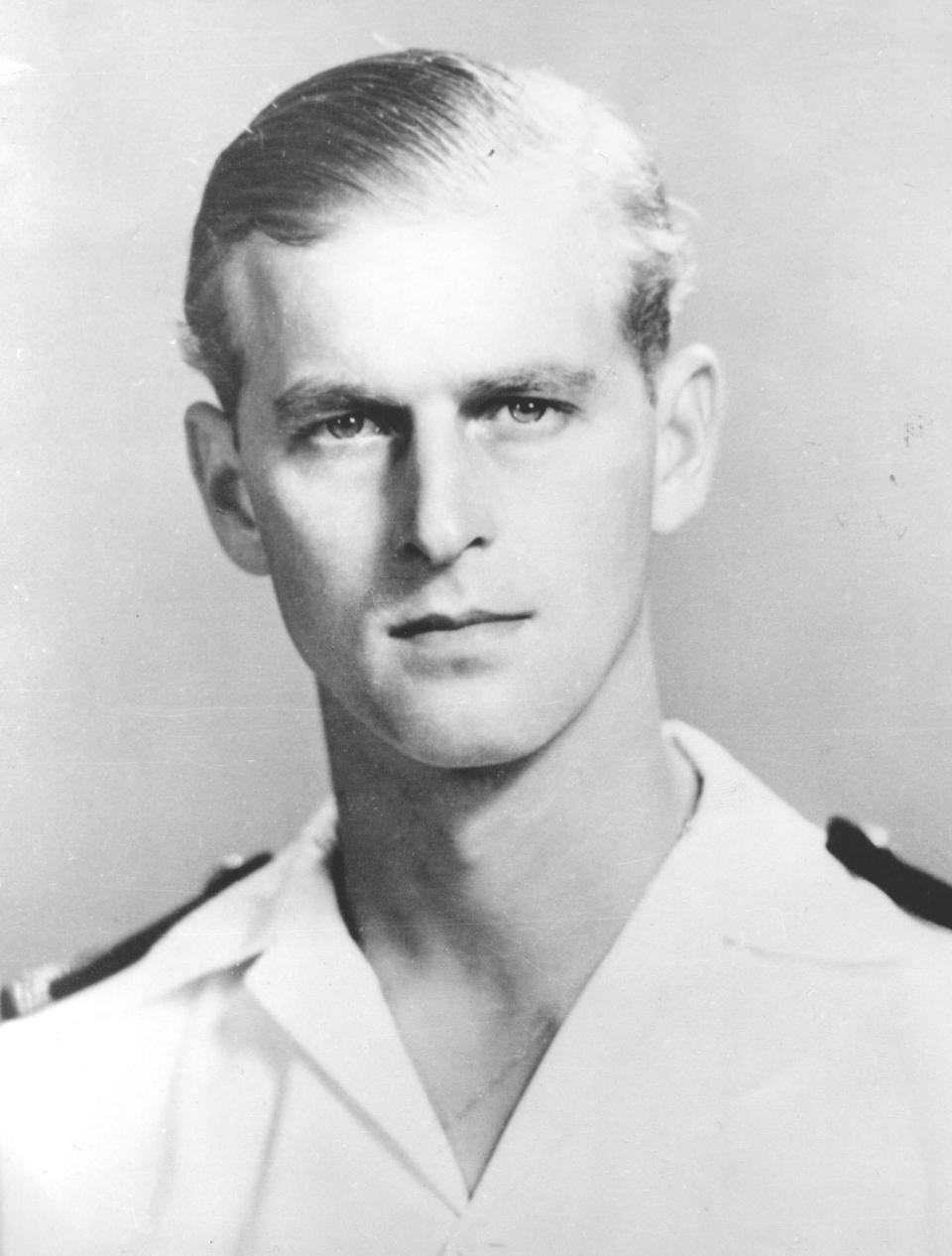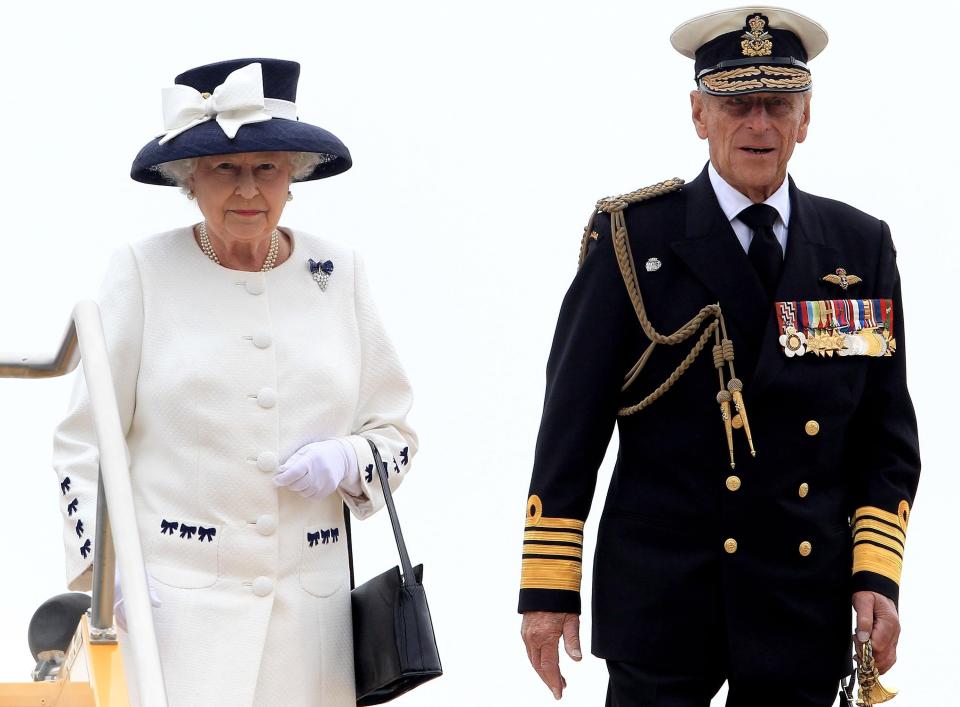Prince Philip’s Navy career: From ‘best cadet’ and WW2 service to the HMS Magpie

- Oops!Something went wrong.Please try again later.
- Oops!Something went wrong.Please try again later.
- Oops!Something went wrong.Please try again later.
As well as his devotion to his family and the country, Prince Philip will also be remembered for his love for the Royal Navy.
Some say the Duke of Edinburgh, who died on Friday aged 99, could have become the First Sea Lord had he not married Princess Elizabeth, who assumed the throne following the death of her father, King George VI.
Born in Corfu in 1921 to Prince Andrew of Greece and Princess Alice of Battenberg, baby Philip and his parents fled to Paris in a Royal Navy ship in 1921 when King Constantine I was forced to abdicate.
The family settled in St Cloud a year later, before moving to the UK. Prince Philip was enrolled at Cheam School in Surrey, living with his grandmother, Princess Victoria, at Kensington Palace and with his uncle George Mountbatten in Berkshire in 1928.
Just over a decade later at the onset of WWII, Philip started at the Royal Naval College at Dartmouth, where he would go on to be named “best cadet” and eventually took command of a frigate, HMS Magpie.
With Britain at war in 1940, Philip joined the Royal Navy, serving as a midshipman on HMS Ramillies, and was posted to the Indian Ocean.
The Duke of Edinburgh was mentioned in despatches for his service during the Second World War. He was a midshipman aboard HMS Valiant off the southern coast of Greece when he earned his honourable citation.
A young naval officer, he was praised for his actions in the decisive Battle of Cape Matapan against the Italian fleet in March 1941.
Philip had been in control of the searchlights as the ship battled an Italian cruiser when he spotted an unexpected second enemy vessel nearby.

He survived unscathed amid his shattered lights as an enemy cannon shell ripped into his position.
His commanding officer said: "Thanks to his alertness and appreciation of the situation, we were able to sink in five minutes two 8in gun Italian cruisers."
Shortly afterwards, he was awarded the Greek War Cross of Valour.
The duke later spoke of how he coped when his shipmates died or were wounded.
"It was part of the fortunes of war," he said. "We didn't have counsellors rushing around every time somebody let off a gun, you know asking 'Are you all right – are you sure you don't have a ghastly problem?' You just got on with it."
At the age of 21, Philip was one of the youngest officers in the Royal Navy to be made First Lieutenant and second-in-command of a ship – the destroyer escort HMS Wallace of the Rosyth Escort Force.
In July 1943, Wallace was dispatched to the Mediterranean and provided cover for the Canadian beachhead of the Allied landings in Sicily.
Philip also served as First Lieutenant on the destroyer HMS Whelp in the Pacific, where he helped to rescue two airmen in 1945.

The men's Avenger bomber crashed into the ocean during the Allies' Operation Meridian II against the Japanese.
The duke, who was 23 at the time, sent the battleship to the spot where the plane had gone down.
The bomber had flooded and rough seas were preventing the men from getting into their dinghy.
Philip, who first spoke publicly about the incident in 2006 for a BBC Radio 4 documentary, remarked in a typically matter-of-fact manner: "It was routine. If you found somebody in the sea, you go and pick them up. End of story, so to speak."
He alerted the sick bay, arranged for hot food to be waiting for them and found new uniforms for the airmen.
The men had no idea who their rescuer actually was until they were told he kept a picture of Princess Elizabeth in his cabin.
The royal wedding took place just two years later.
Philip was reunited years later with one of the airmen – former Petty Officer (Airman) Norman Richardson – at the Royal British Legion's Field of Remembrance at Westminster Abbey in 2013.
Mr Richardson, of Weybridge, Surrey, said at the time: "We had a joke about Prince Philip giving me a set of his clothes when I was picked up off the coast of Sumatra. The duke still remembers it, and I told him they weren't really his clothes, they were the property of the purser's store."
The duke was on HMS Whelp on September 2 1945 in Tokyo Bay when the Japanese surrendered.
He recalled the horrors of seeing former prisoners of war returning from the camps.
"It was an emotional experience. These people were naval officers who hadn't been in a naval atmosphere for three or four years, sometimes longer," he told a BBC documentary in 1995.
"When we sat down in the mess they were suddenly in an atmosphere that they recognised.
"They sat there with tears running down their cheeks. They just couldn't speak."
Additional reporting by Press Association
Read More
Fox News host links Harry & Meghan to Philip’s death

